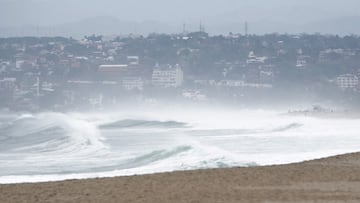Why do they name storms and hurricanes and how are the names chosen?
The first tropical storm of the season, Alex, is headed towards South Florida. When did NOAA start naming storms and why?


Hurricane season is here and the National Oceanic and Atomopshic Administration (NOAA) has named the first storm expected to make landfall in the United States. Tropical storm Alex has led officials in South Florida to issue a warning that heavy rains may be in their forecast this weekend and to prepare for possible flooding and power outages.
In late May, NOAA released their annual hurricane season prediction that shows a higher likelihood of an “above normal” season with anywhere between fourteen to twenty-one named storms and between six to ten hurricanes. The agency expects a greater number of storms to form in the Gulf of Mexico and Atlantic region this year thanks to the La Niña weather phenomenon which brings warmer than average temperatures to the region.
When did NOAA begin naming storms?
In the mid twentieth century, the US government began naming storms to simplify communications. Before, NOAA often used positions or latitude and longitude to communicate about storms but this becomes very confusing when there is more than one present in a specific area at a time.
A storm is given a name when its winds reach more than thirty miles per hour. The World Meteorological Organization, which selects the names, upgrades the storm to a hurricane or typhoon if the winds reach more than 119 miles per hours.
The World Meteorological Organization nor NOAA invented this practice. In Puerto Rico records show that as early as 1876, before becoming a colony of the United States, some on the island would Cristen each storm with the name of a Saint. A meteorologist in Australia also popularized the practice in the 19th century, which was adopted by the US in the 1950s.
In the first few decades of using this method NOAA had only selected women’s names for storms. However, in the 1970s this practice was ended and traditionally male names were used. This did lead to a phenomenon noted by social scientists where storms with female names were thought of as weaker and less of a threat; highlighting the ways in which gender bias informs a society’s perception of a threat. It is important to remember that the severity of a storm has no influence over the name that is selected. Quite the opposite. The storm names have already been chosen for 2022 and as the storms emerge they will be given a name in alphabetical order. Alex, being the first strong storm of the season, was given a name starting with ‘A’ precisely because it is the first storm.
Related stories
The names are also no longer chosen by NOAA but rather the World Meteorological Organization, which recycles lists every six years.
What names have been retired?
NOAA has reported that “if a storm is so deadly or costly that the future use of its name on a different storm would be inappropriate for obvious reasons of sensitivity,” it can be retired. Since 2000, forty-four names have been taken out of circulation. This compares to twenty-two names retired between 1980 and 1999. This means that since the beginning of this century more than double the names have been retired than the previous two decades --an indicator of the impact of climate change on storm severity.

